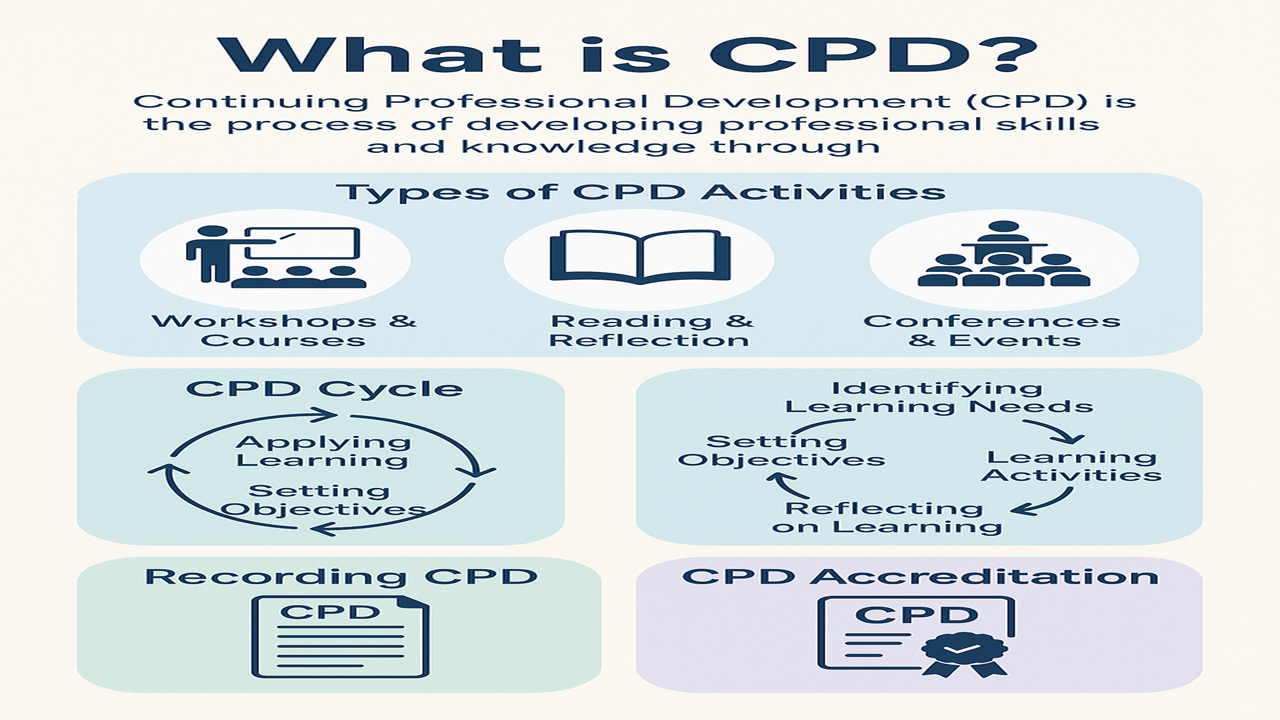Understanding Continuing Professional Development (CPD): A Strategic Approach to Lifelong Learning

In today’s dynamic professional landscape, the pursuit of knowledge and skill enhancement is not merely beneficial—it is essential. Continuing Professional Development (CPD) stands as a cornerstone for professionals aiming to maintain relevance, demonstrate commitment, and achieve career progression.
What is CPD?
Continuing Professional Development refers to the ongoing process of developing and enhancing one's abilities through various learning activities. These activities encompass structured learning, such as workshops and seminars, as well as reflective practices like reading and self-assessment. CPD is not confined to a specific industry; it is a universal concept applicable across all sectors, including education, healthcare, finance, and technology .
The Importance of CPD
Engaging in CPD offers numerous advantages:
-
Career Advancement: Consistently updating skills and knowledge can lead to new opportunities and promotions.
-
Enhanced Competence: CPD ensures that professionals remain proficient and effective in their roles.
-
Professional Recognition: Demonstrating a commitment to learning can elevate one's standing within an industry.
-
Adaptability: Continuous learning equips individuals to navigate and thrive amid industry changes .
Types of CPD Activities
There are three primary types of CPD activities to consider:
-
Structured CPD: Interactive and participation-based learning, such as workshops, seminars, and eLearning courses.
-
Reflective CPD: Passive learning activities, including reading industry publications and attending lectures.
-
Self-Directed CPD: Independent learning through research, practice, and experience .
A balanced approach incorporating all three types can lead to more comprehensive professional development.
The CPD Cycle
To effectively manage CPD, professionals can adopt the CPD Cycle, which comprises five stages:
-
Identifying Learning Needs: Assessing current skills and knowledge to determine areas for improvement.
-
Setting Objectives: Defining clear, achievable learning goals.
-
Engaging in Learning Activities: Participating in relevant CPD opportunities.
-
Reflecting on Learning: Evaluating the effectiveness of the learning experiences.
-
Applying New Knowledge: Implementing acquired skills and insights into professional practice .
Recording CPD
Maintaining a detailed record of CPD activities is crucial. You can create a log of your learning experiences and track progress that can be presented to your employer as a portfolio of your continuous professional development.
CPD Accreditation
For organizations, offering CPD-accredited programs can enhance their credibility and attract professionals seeking recognized development opportunities. The CPD Certification Service provides accreditation for various learning activities, ensuring they meet established standards and effectively contribute to professional growth .
Conclusion
Embracing CPD is more than a professional obligation—it is a strategic approach to personal and career development. By committing to continuous learning, professionals enhance their competencies and position themselves for sustained success in an ever-changing world.